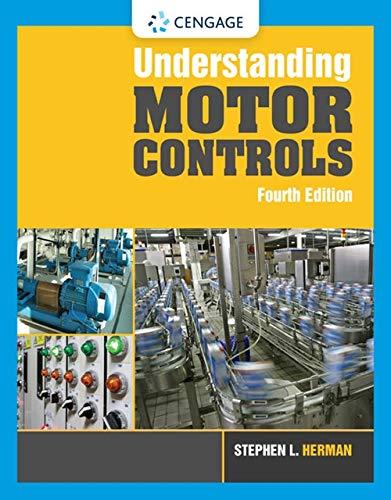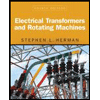
Automotive Technology
7th Edition
ISBN: 9781337794213
Author: ERJAVEC, Jack.
Publisher: Cengage,
expand_more
expand_more
format_list_bulleted
Concept explainers
Question
Chapter 19, Problem 7MC
To determine
The correct option for the given blank.
Expert Solution & Answer
Trending nowThis is a popular solution!

Students have asked these similar questions
A commercial office building is located in the city of Lansing, Michigan, and is heatedusing a gaseous fuel with a heating value of 725 Btu/std ft3. The indoor designtemperature is 71ºF. The heat load for the building is known to be 250,000 Btu/hr. Thisheat load accounts for the fact that there are internal heat gains in the building, due tothe presence of people and electronic equipment (e.g., lights and radios). People in thebuilding are usually seated and involved in light activity.a) The furnace had an initial efficiency factor of 73% when installed, but since thenefficiency-improvement retrofits were implemented that raised the efficiency factorto its present value of 82%. The building was designed using the 99% designheating temperature value for the city to determine the outdoor design temperature.Evaluate the annual fuel quantity (in std ft3) required to heat the building, using thedegree-day or bin method.b) Seventy people use the building, but the occupancy pattern for the…
The volumetric flow rate of air through a duct transition of the type shown in Table 12-9b (rectangular with two parallel sides) is 2 m3/s. The duct before the transition issquare, with a height of 50 cm. The expansion ratio across the transition is 4 (i.e., theduct area after the transition is 4 times greater than the duct area before the transition).a) Determine the pressure loss (in Pa) across the transition if the exit from the duct isabrupt (i.e., the diverging angle of the transition is 180º).b) Determine the percentage reduction in pressure loss for a transition diverging angleof 20º compared to the one in part (a).c) The head HVAC engineer requires the pressure loss across the transition to bereduced to less than 50% of the pressure loss for an abrupt exit (i.e., the case in part(a)), and suggests a transition diverging angle of 45º. Will this new diverging angleachieve the required reduction in pressure loss? Justify your answer.d) For a transition diverging angle of 90º, the…
The volumetric flow rate of air through a duct transition of the type shown in Table 12-9b (rectangular with two parallel sides) is 2 m3/s. The duct before the transition issquare, with a height of 50 cm. The expansion ratio across the transition is 4 (i.e., theduct area after the transition is 4 times greater than the duct area before the transition).a) Determine the pressure loss (in Pa) across the transition if the exit from the duct isabrupt (i.e., the diverging angle of the transition is 180º).b) Determine the percentage reduction in pressure loss for a transition diverging angleof 20º compared to the one in part (a).c) The head HVAC engineer requires the pressure loss across the transition to bereduced to less than 50% of the pressure loss for an abrupt exit (i.e., the case in part(a)), and suggests a transition diverging angle of 45º. Will this new diverging angleachieve the required reduction in pressure loss? Justify your answer.d) For a transition diverging angle of 90º, the…
Chapter 19 Solutions
Automotive Technology
Ch. 19 - To protect electronic circuits, some voltage...Ch. 19 - What is the purpose of the diodes in the...Ch. 19 - How does a voltage regulator regulate the voltage...Ch. 19 - Describe the differences between an overrunning...Ch. 19 - What would happen to the output of an AC generator...Ch. 19 - Describe the basic difference between a DC motor...Ch. 19 - True or False? A faulty voltage regulator can only...Ch. 19 - True or False? A generator that is not producing...Ch. 19 - Prob. 1MCCh. 19 - What part of the AC generator is the rotating...
Ch. 19 - Which type of stator winding has two windings in...Ch. 19 - Slip rings and brushes. mount on the rotor shaft...Ch. 19 - The alternating current produced by the AC...Ch. 19 - Prob. 6MCCh. 19 - Prob. 7MCCh. 19 - Technician A says that the waveform produced by an...Ch. 19 - While discussing what is indicated by a vehicles...Ch. 19 - When checking the charging system on a late-model...Ch. 19 - Prob. 4ASRQCh. 19 - Technician A says generator output should be...Ch. 19 - Technician A says that many newer charging systems...Ch. 19 - While diagnosing rapid and severe belt wear after...Ch. 19 - Prob. 8ASRQCh. 19 - Prob. 9ASRQCh. 19 - Prob. 10ASRQ
Knowledge Booster
Learn more about
Need a deep-dive on the concept behind this application? Look no further. Learn more about this topic, mechanical-engineering and related others by exploring similar questions and additional content below.Similar questions
- Auto Controls The figure is a schematic diagram of an aircraft elevator control system. The input to the systemin the deflection angle of the control lever , and the output is the elevator angle phi.show that for each angle theta of the control lever ,there is a corresponding elevator angle phi. Then find Y(s)/theta(s) and simplify the resulting transfer function . Also note from the diagram that y and phi is related Show full solution, no copied solutionsarrow_forwardhand-written solutions only. correct answers upvotedarrow_forwardFor a small house located in Ottawa, Ontario, there are three windows and three doors.You are assigned the task of determining the infiltration and related heat loss rates.It has been found experimentally that the pressure difference due to pressurization is -0.002 in. water. The pressure difference due to stack effect for this building is assumednegligible due to it having only a single floor. The dominant mean wind speed fordesign is assumed to be 15 mph. The house orientation is such that it is normal to thedominant mean wind direction.The house was built recently and all of the windows and doors are tight fitting. Thehouse construction and materials are typical for Ottawa, Ontario. The doors are 3 ftwide and 6.75 ft high. Each of the windows is double hung and each window has thefollowing overall dimensions: 3 ft wide and 4 ft high. (For clarity it is noted that eachdouble hung window has two glass segments that are 3 ft wide and 2 ft high.)The indoor design temperature is 70ºF and…arrow_forward
- H.W1: Due to the applied loading, the element at point A on the solid cylinder is subjected to the state of stress shown. Determine the principal 6 ksi stresses acting at this point. 12 ksiarrow_forwardA wall is 7 m wide and 3 m high, and contains two doors and one window. Details onthe wall components are as follows:• The window is a triple-glazed glass window with a 6.4 mm space filled withargon gas. The window surfaces do not have any special surface emissivitycoatings. The window dimensions are 2 m by 1 m, and the window has analuminum sash with a thermal break.• The wall material has an overall heat-transfer coefficient of 0.5 W/(m2-ºC).• Each door is a solid core flush door made of wood, with a thickness of 4.5 cm.Also, each door is 2.1 m high and 0.8 m wide. Both doors are accompanied bymetal storm doors.a) Determine the overall heat-transfer coefficient [in W/(m2-ºC)] for the wallcombination (based on the overall dimensions of the wall-window-doorscombination), assuming winter conditions.b) The room is maintained at a temperature of 22ºC. If the heat flow rate through thewall is 0.4 kW at a certain time, what is the outdoor temperature at that time?Infiltration can be…arrow_forwardhand-written solutions only. correct answers upvotearrow_forward
- Can you use MATLAB?arrow_forwardhand-written solutions only! correct answers upvotedarrow_forwardSuppose that in a system with generalized coordinates 0₁ and 02, the equations of motion are found to be as follows. ƒ (×1,$1‚Ï‚½‚†2,$2,01,01,02, 02, 02, 02) = Q1 + C₁ (1,1,1,1,1,1,0₁,01,02,02,02,02) = C₂ In this system, a nonholonomic constraint for 12 = 0 was introduced to solve for a constraint force. r₁ is a constant. Which of the terms in these equations should go to zero, and why?arrow_forward
- 3.) 13.152* - A sphere (m = 2 kg) is connected to a fixed point O by an inextensible cord (L = 1.2 m). The sphere rests on a frictionless horizontal surface at a distance of x = 0.5 m from O when it is given a velocity (V.) in a direction perpendicular to OA. It moves freely until it reach A', when the cord becomes taut. Find the maximum possible velocity v. if the impulse of the force exerted on the cord is not to exceed F = 3Ns.arrow_forward4.) 13.165* - Two billiard balls A & B (same mass m & diameter d = 2.37") are as shown. Ball A has velocity V₁ = 3 ft/s when it strikes B, which is at rest. B then moves in the x direction after impact. Find (a) angle 0, (b) the velocity of B after impact (VB'). Positional variables are x = 6" and y = 10", and e = 0.9.arrow_forwardWe will consider a linear system and a nonlinear system under uncertainty, each expressed in the form of a set of stochastic differential equation (SDE) as follows: = da (Ax+ Bu)dt + Gdw, dx = f(x,u,t)dt+Gdw, (1) (2) where x is the state, u is the control, and dw is a differential increment of standard Brownian motion, i.e., E[dw] = 0 and E [dw(t)dw(t)] = dt-1. In this problem, we consider the linear SDE, Eq. (1), with a very simple model where x = R², u = [0,0] (no control), and dw R². The matrices A, B, and G are given as follows: A=02x2, B=02x2; G = [000] (3) where σp Є R represents the degree of the uncertainty, and let us take σ₁ = 2 and σ2 = 3. Assume that the initial state is deterministic and e(t = 0) = [0,0]. Take the following steps to simulate the given SDE for 1 € [0, 1]: (a): Consider the increments of w between each time interval [+1). Derive the analytical expression of Aw using w~N(02, 12), where Aw, w(tk+1) — w(tk). (c): Derive the approximate continuous-time EoM from…arrow_forward
arrow_back_ios
SEE MORE QUESTIONS
arrow_forward_ios
Recommended textbooks for you
 Automotive Technology: A Systems Approach (MindTa...Mechanical EngineeringISBN:9781133612315Author:Jack Erjavec, Rob ThompsonPublisher:Cengage Learning
Automotive Technology: A Systems Approach (MindTa...Mechanical EngineeringISBN:9781133612315Author:Jack Erjavec, Rob ThompsonPublisher:Cengage Learning Refrigeration and Air Conditioning Technology (Mi...Mechanical EngineeringISBN:9781305578296Author:John Tomczyk, Eugene Silberstein, Bill Whitman, Bill JohnsonPublisher:Cengage Learning
Refrigeration and Air Conditioning Technology (Mi...Mechanical EngineeringISBN:9781305578296Author:John Tomczyk, Eugene Silberstein, Bill Whitman, Bill JohnsonPublisher:Cengage Learning Understanding Motor ControlsMechanical EngineeringISBN:9781337798686Author:Stephen L. HermanPublisher:Delmar Cengage Learning
Understanding Motor ControlsMechanical EngineeringISBN:9781337798686Author:Stephen L. HermanPublisher:Delmar Cengage Learning Electrical Transformers and Rotating MachinesMechanical EngineeringISBN:9781305494817Author:Stephen L. HermanPublisher:Cengage Learning
Electrical Transformers and Rotating MachinesMechanical EngineeringISBN:9781305494817Author:Stephen L. HermanPublisher:Cengage Learning Automotive TechnologyMechanical EngineeringISBN:9781337794213Author:ERJAVEC, Jack.Publisher:Cengage,
Automotive TechnologyMechanical EngineeringISBN:9781337794213Author:ERJAVEC, Jack.Publisher:Cengage, Welding: Principles and Applications (MindTap Cou...Mechanical EngineeringISBN:9781305494695Author:Larry JeffusPublisher:Cengage Learning
Welding: Principles and Applications (MindTap Cou...Mechanical EngineeringISBN:9781305494695Author:Larry JeffusPublisher:Cengage Learning

Automotive Technology: A Systems Approach (MindTa...
Mechanical Engineering
ISBN:9781133612315
Author:Jack Erjavec, Rob Thompson
Publisher:Cengage Learning

Refrigeration and Air Conditioning Technology (Mi...
Mechanical Engineering
ISBN:9781305578296
Author:John Tomczyk, Eugene Silberstein, Bill Whitman, Bill Johnson
Publisher:Cengage Learning

Understanding Motor Controls
Mechanical Engineering
ISBN:9781337798686
Author:Stephen L. Herman
Publisher:Delmar Cengage Learning

Electrical Transformers and Rotating Machines
Mechanical Engineering
ISBN:9781305494817
Author:Stephen L. Herman
Publisher:Cengage Learning

Automotive Technology
Mechanical Engineering
ISBN:9781337794213
Author:ERJAVEC, Jack.
Publisher:Cengage,

Welding: Principles and Applications (MindTap Cou...
Mechanical Engineering
ISBN:9781305494695
Author:Larry Jeffus
Publisher:Cengage Learning